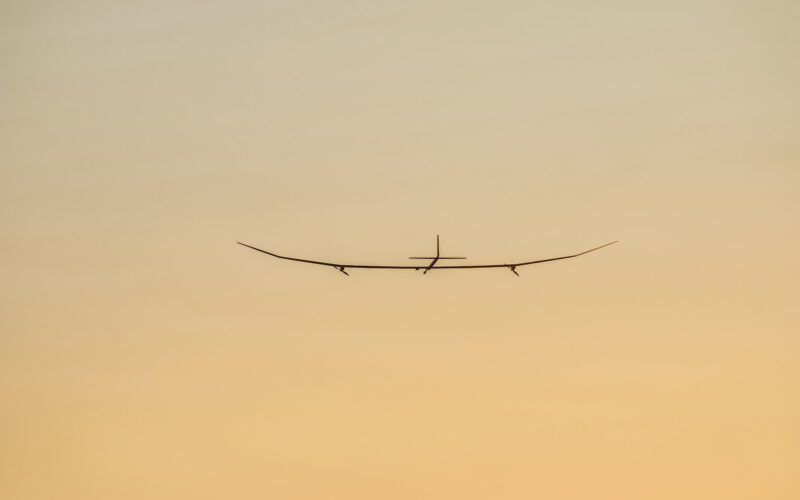PHASA-35, a solar-powered unmanned aircraft developed by BAE Systems and Prismatic, took off for a first test flight from the Woomera test site of the Royal Australian Air Force (RAAF) in South Australia. The high altitude long endurance (HALE) drone is presented as a cheaper and more flexible alternative to satellites.
With a wingspan of 35 meters, the PHASA-35 (Persistent High Altitude Solar Aircraft) test model was developed as part of a collaboration between BAE Systems and Prismatic, with the funding of the UK Defense Science and Technology Laboratory (DSTL) and the Australian Defense Science and Technology Group (DSTG).
PHASA-35 is designed for operations in the stratosphere, above the weather and conventional air traffic, and positions itself as a cheaper alternative to satellites with the flexibility of an aircraft. Thanks to the panels on its wings, it is powered by the sun during the day and relies on its batteries at night, giving it the ability to operate for up to a year straight.
The drone could become a stable platform for both military and commercial applications, such as surveillance and communication. Depending on its payload of up to 15 kilograms, PHASA-35 could help prevent environmental risks such as forest fires, map areas for geospatial intelligence, or bring 5G and 6G networks in remote places around the world. According to BAE, the capabilities would be unique on the market.
Initially developed by the Hampshire-based company Prismatic, a quarter-scale model of the aircraft called PHASE-8 with a wingspan of 8.75 meters already completed a successful maiden flight in 2017. After collaborating for over two years on the development of PHASA-35, the next stage of the project, BAE Systems eventually acquired Prismatic in September 2019.
Drone demonstrators show the way towards sustainable aviation
But PHASA-35 is not the only solar drone supported by the United Kingdom. In 2013, Airbus acquired the British defense company QinetiQ, and its solar-powered “pseudo-satellite” Zephyr. In August 2018, the Zephyr S broke the record for the longest flight ever. The aircraft had landed after being airborne for 25 days, 23 hours and 57 minutes. The technology is also planned for both civilian and military markets.
In May, BAE unveiled another unconventional design, named MAGMA. The flapless aircraft relies solely on blown air it produces to maneuver. This allows manufacturing lighter aircraft that are also quicker and cheaper to assemble and maintain.

